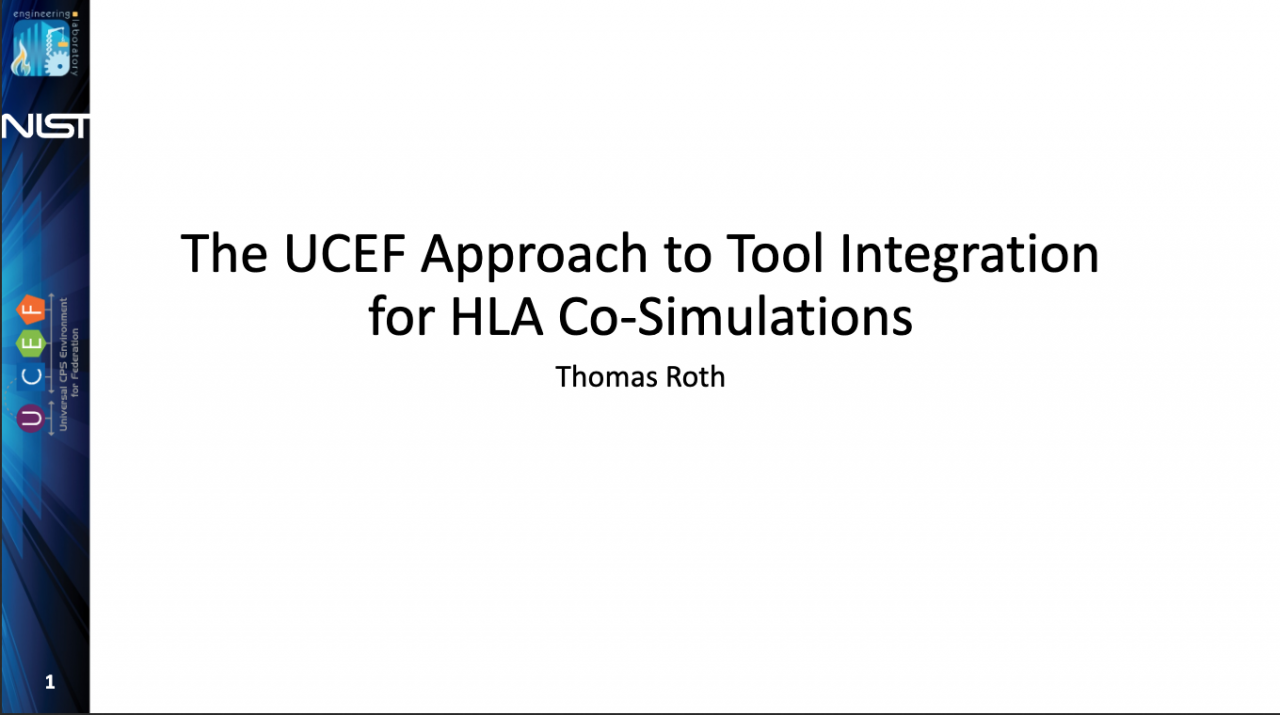The UCEF Approach to Tool Integration for HLA Co-Simulations
Submitted by Thomas Roth
on
Thomas Roth is the Associate Director for the CPS/IoT Testbed in the Smart Grid and Cyber-Physical Systems Program Office at NIST. His research interests are in formal methods for the composition of cyber-physical systems, and the detection of compromised cyber-physical devices through comparison of their reported behavior against the constraints of the physical system.
ABSTRACT

View Slides | Download
Cyber-Physical Systems (CPS) are complex systems that require expertise from multiple domains in their design, implementation, and validation. One cost-effective technique for validation of CPS is the integration of two or more domain-specific simulators into a joint simulation called a co-simulation. Standards such as the High Level Architecture (HLA) have been developed in part to simplify the co-simulation development process. However, CPS co-simulation still requires significant expertise, especially when the goal is the integration of a new domain-specific tool or simulator. The U.S. National Institute of Standards and Technology (NIST) has released a software platform called the Universal CPS Environment for Federation (UCEF) to simplify the development of CPS co-simulations. UCEF provides two approaches to integrate tools and simulators. The first approach is a Java library called the UCEF Gateway that limits the development effort to a list of callback functions in a well-defined simulation life cycle. The second approach is a Representational State Transfer (REST) server developed using the gateway for applications that can implement a Transmission Control Protocol (TCP)/Internet Protocol (IP) client. This paper describes how both approaches are implemented to expedite the integration of new domain-specific tools and simulators.
Thomas Roth is the Associate Director for the CPS/IoT Testbed in the Smart Grid and Cyber-Physical Systems Program Office at NIST. His research interests are in formal methods for the composition of cyber-physical systems, and the detection of compromised cyber-physical devices through comparison of their reported behavior against the constraints of the physical system.
ABSTRACT
 |
| View Slides | Download |
Cyber-Physical Systems (CPS) are complex systems that require expertise from multiple domains in their design, implementation, and validation. One cost-effective technique for validation of CPS is the integration of two or more domain-specific simulators into a joint simulation called a co-simulation. Standards such as the High Level Architecture (HLA) have been developed in part to simplify the co-simulation development process. However, CPS co-simulation still requires significant expertise, especially when the goal is the integration of a new domain-specific tool or simulator. The U.S. National Institute of Standards and Technology (NIST) has released a software platform called the Universal CPS Environment for Federation (UCEF) to simplify the development of CPS co-simulations. UCEF provides two approaches to integrate tools and simulators. The first approach is a Java library called the UCEF Gateway that limits the development effort to a list of callback functions in a well-defined simulation life cycle. The second approach is a Representational State Transfer (REST) server developed using the gateway for applications that can implement a Transmission Control Protocol (TCP)/Internet Protocol (IP) client. This paper describes how both approaches are implemented to expedite the integration of new domain-specific tools and simulators.